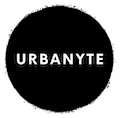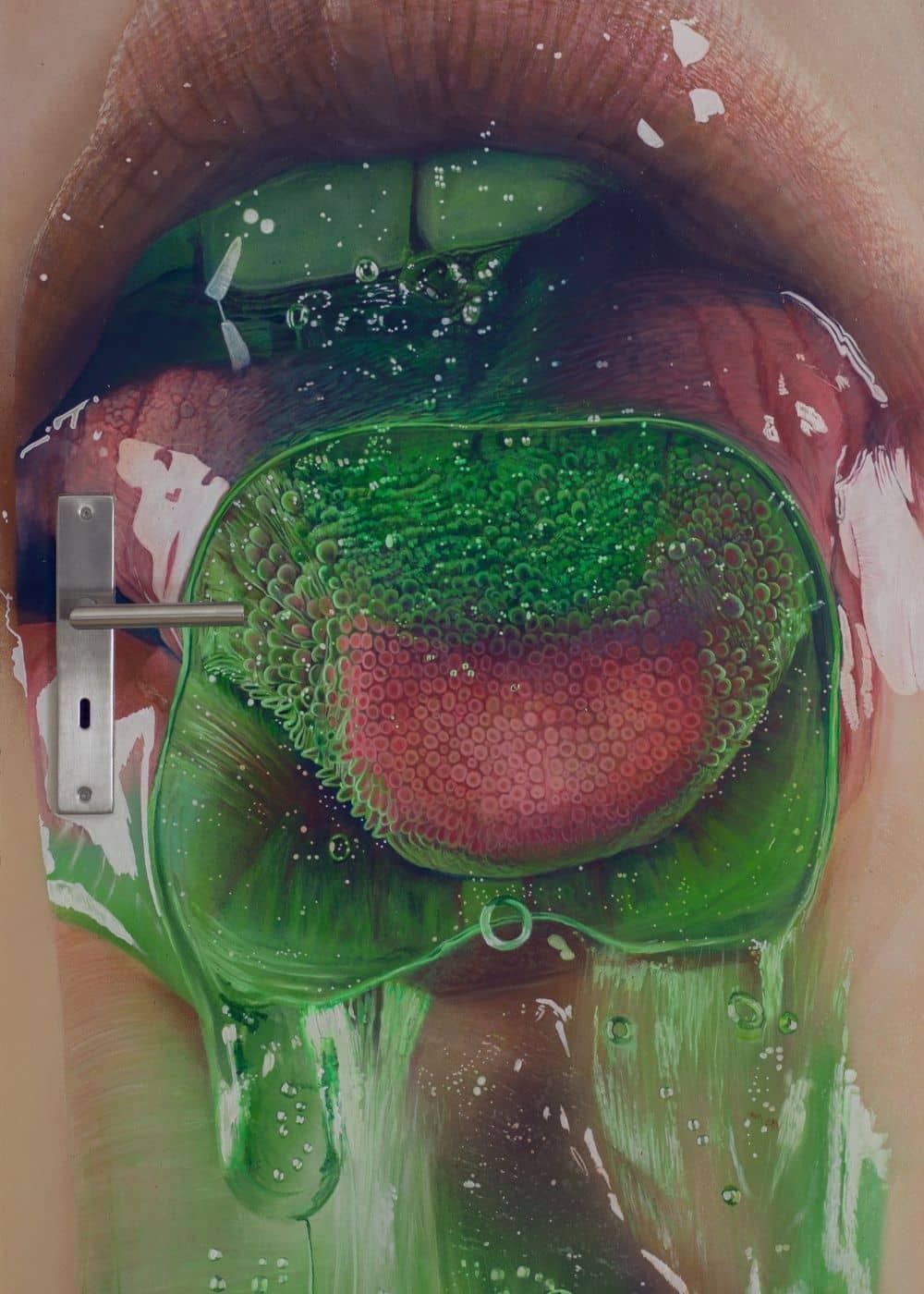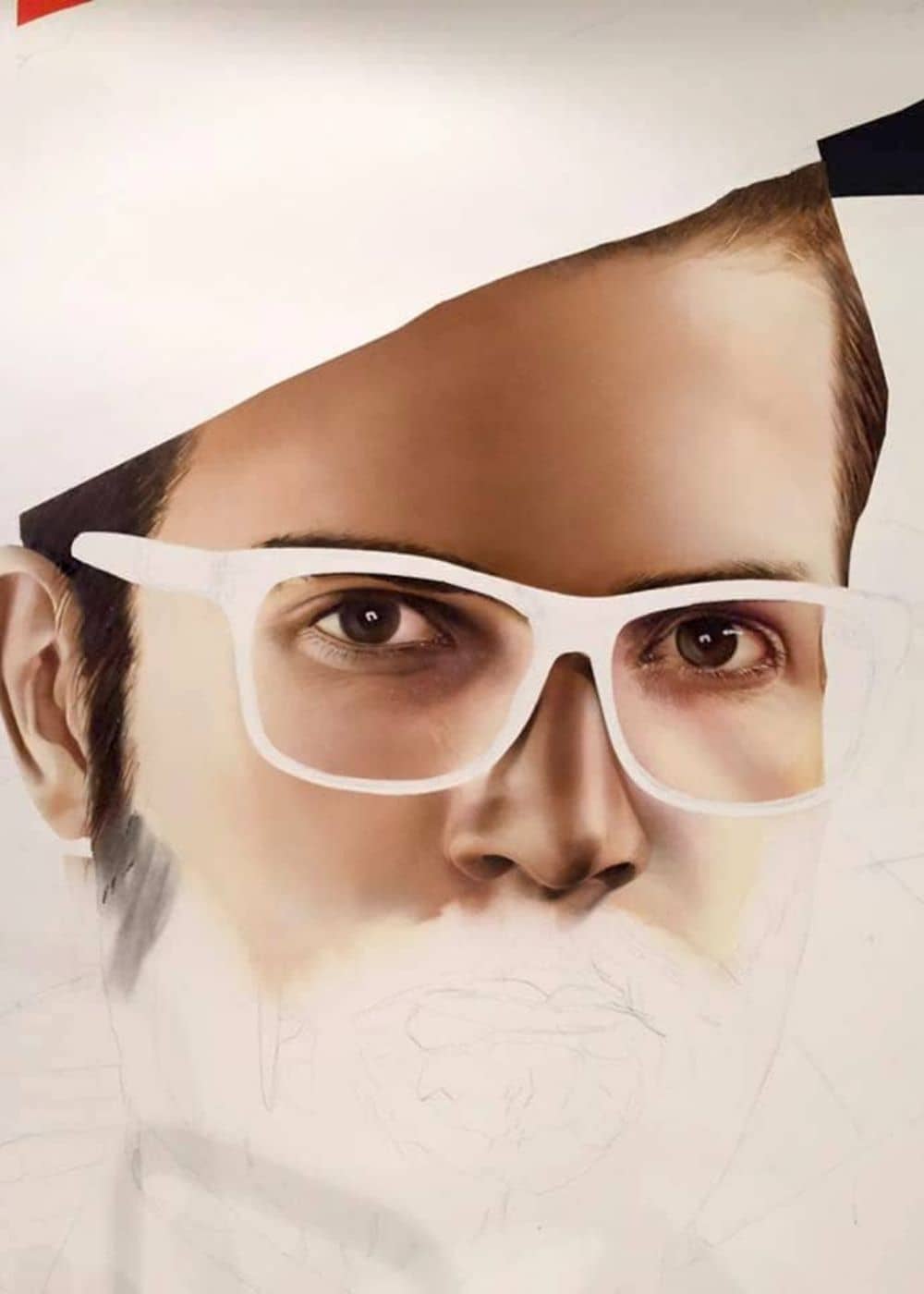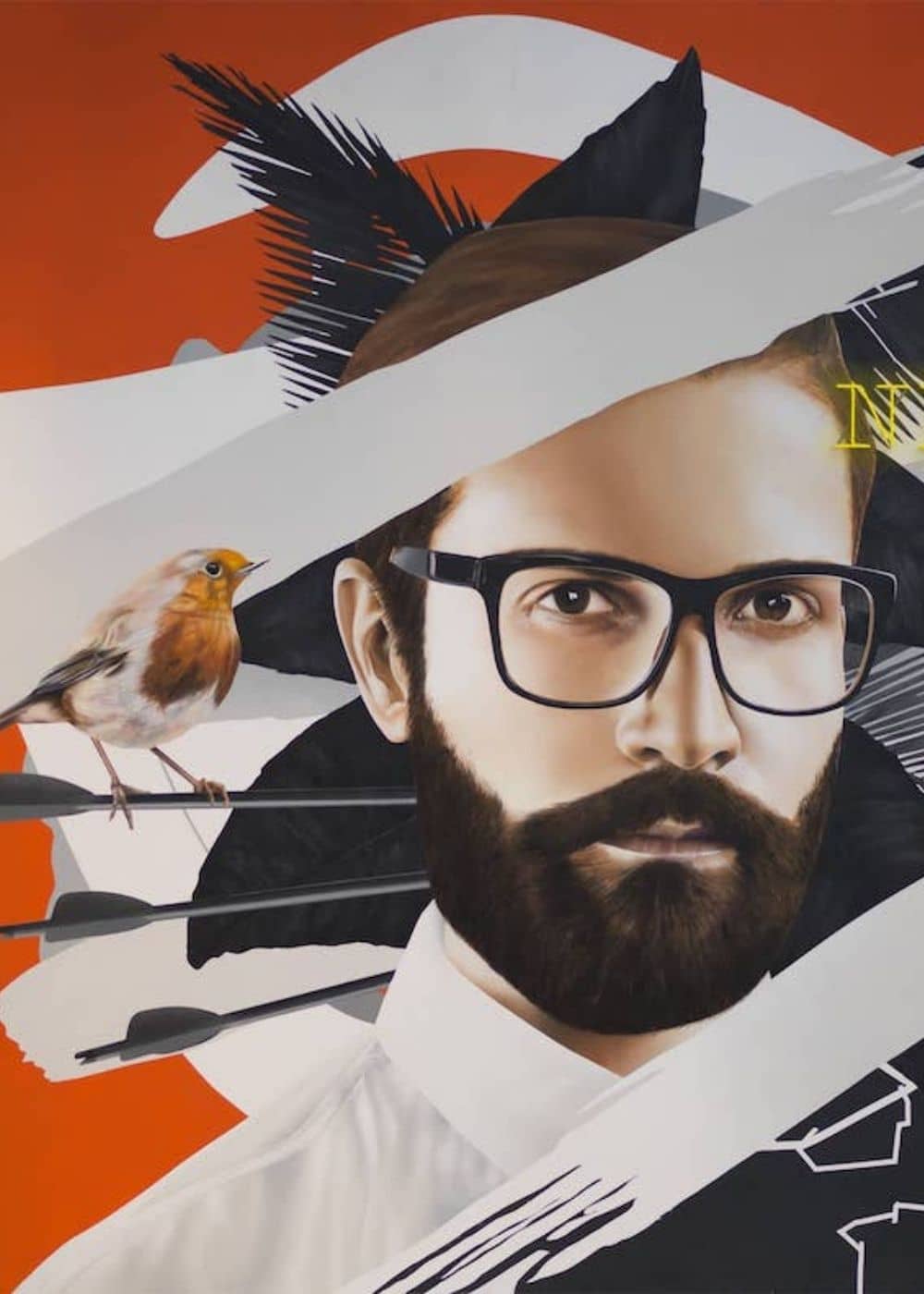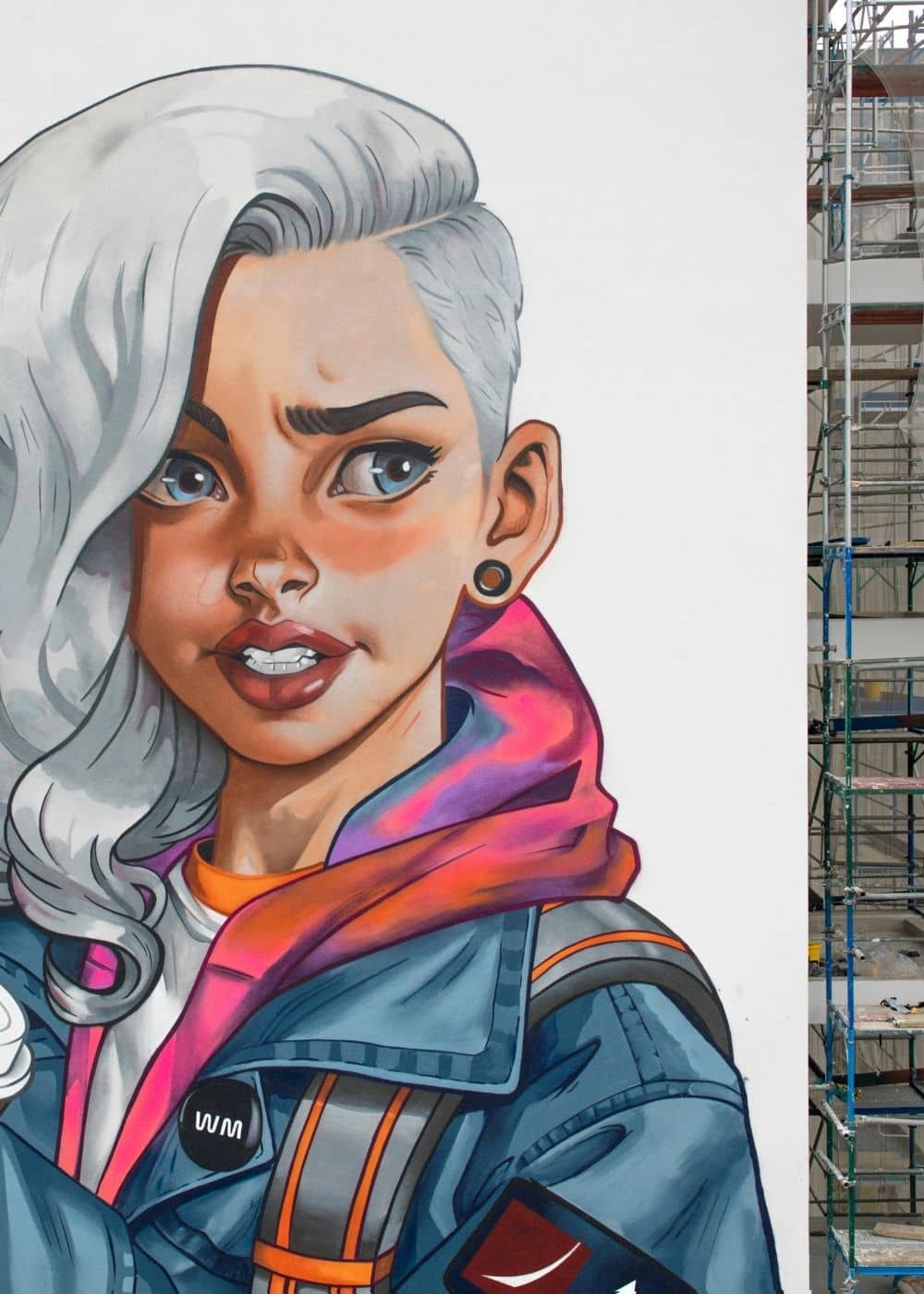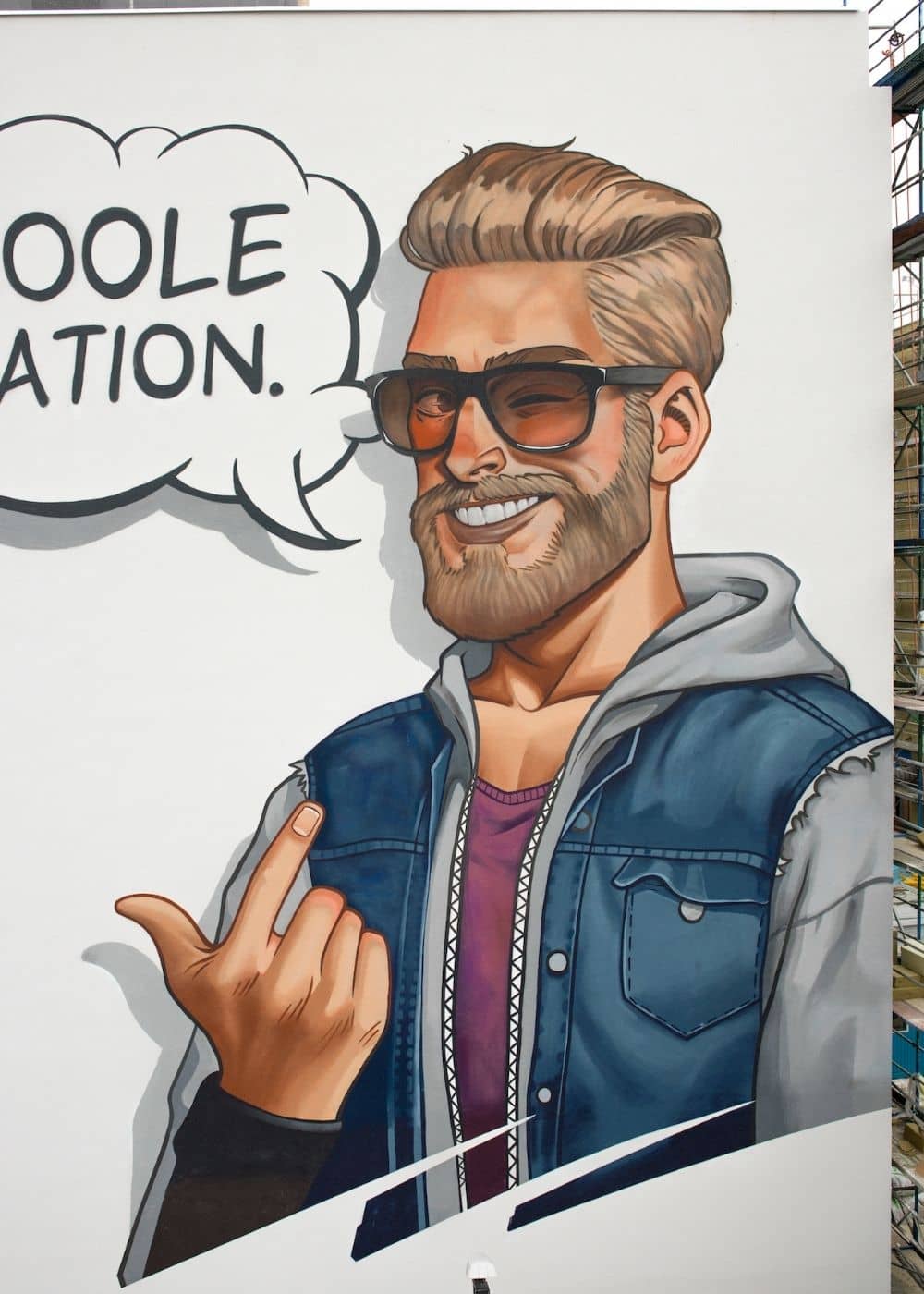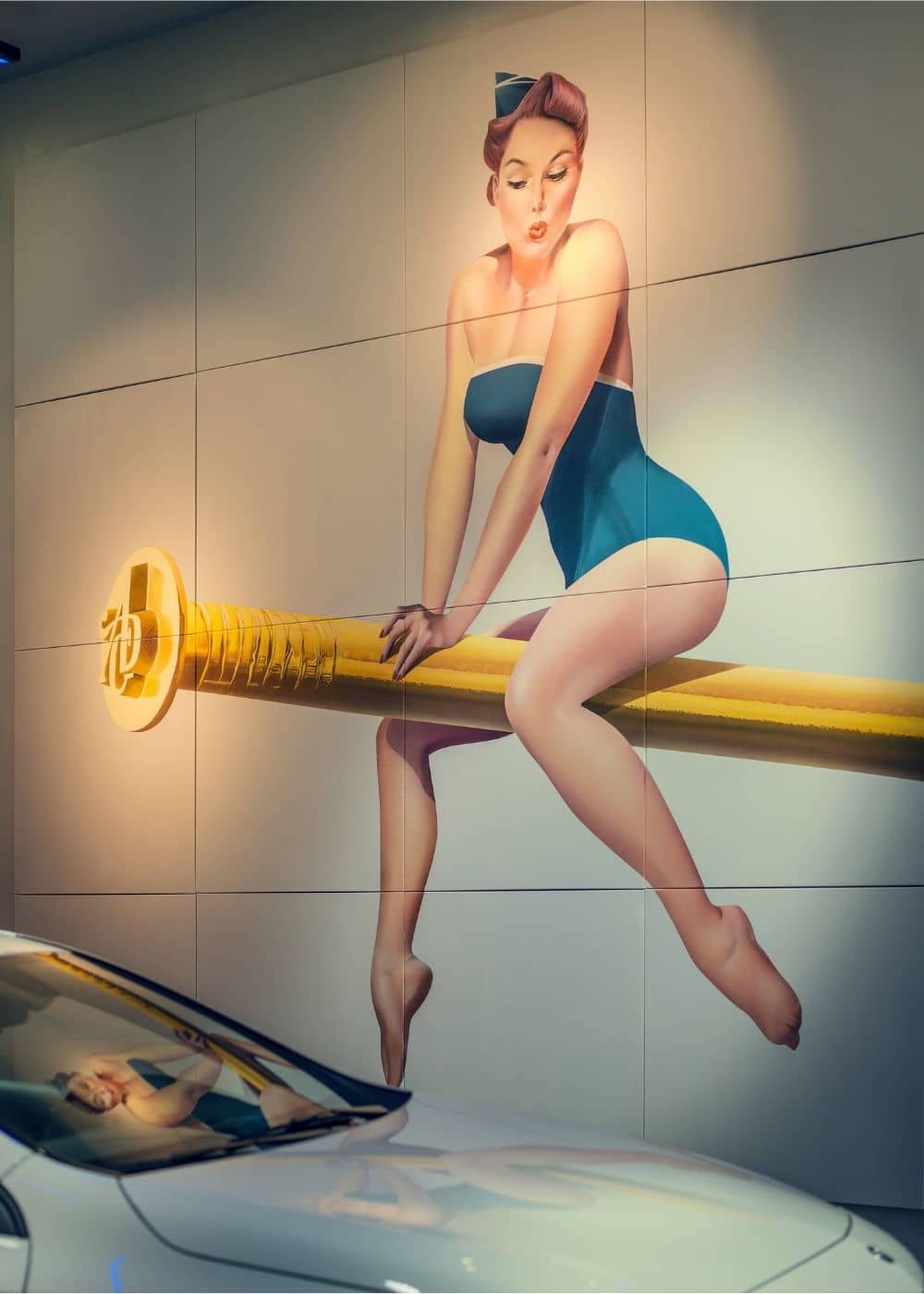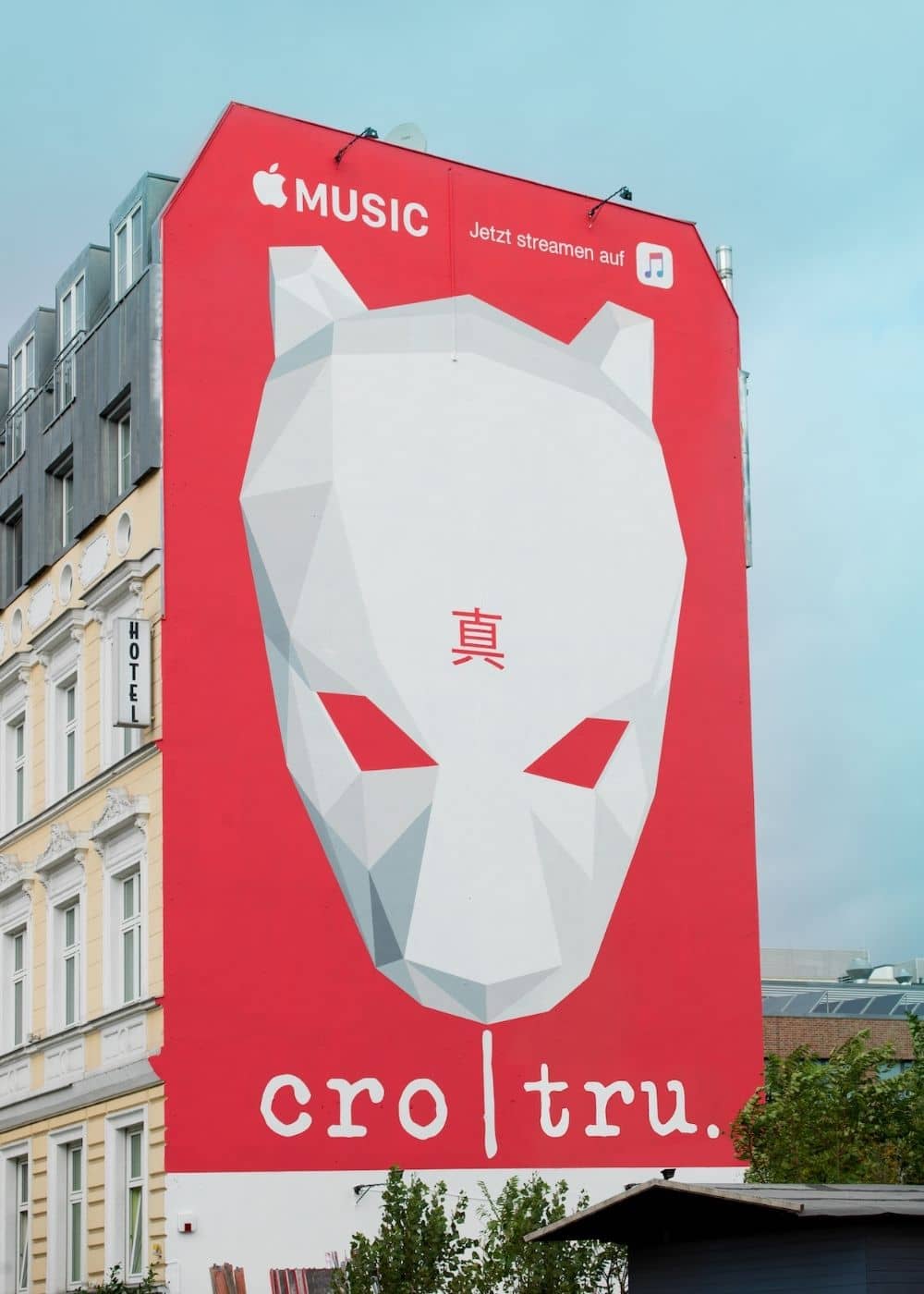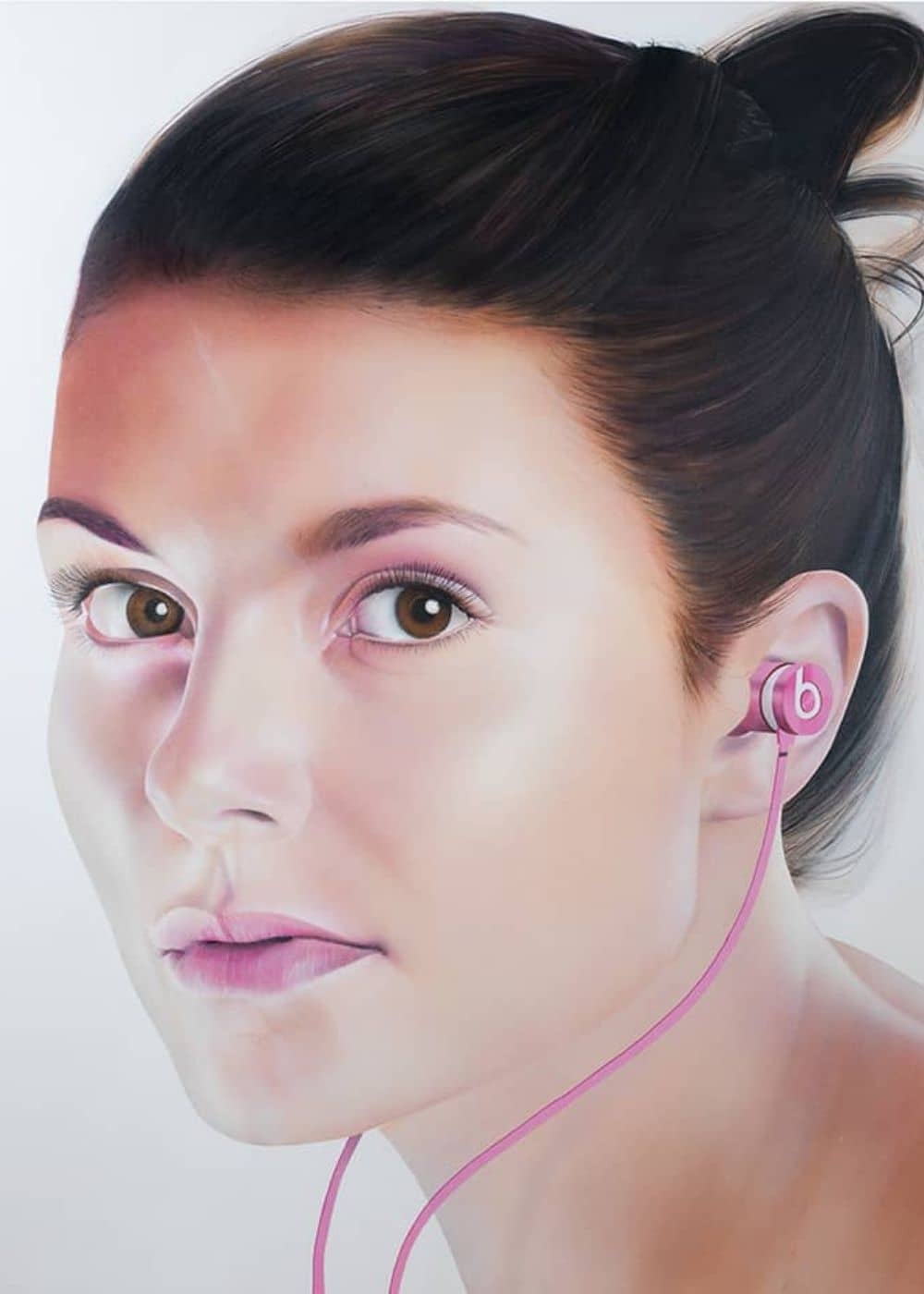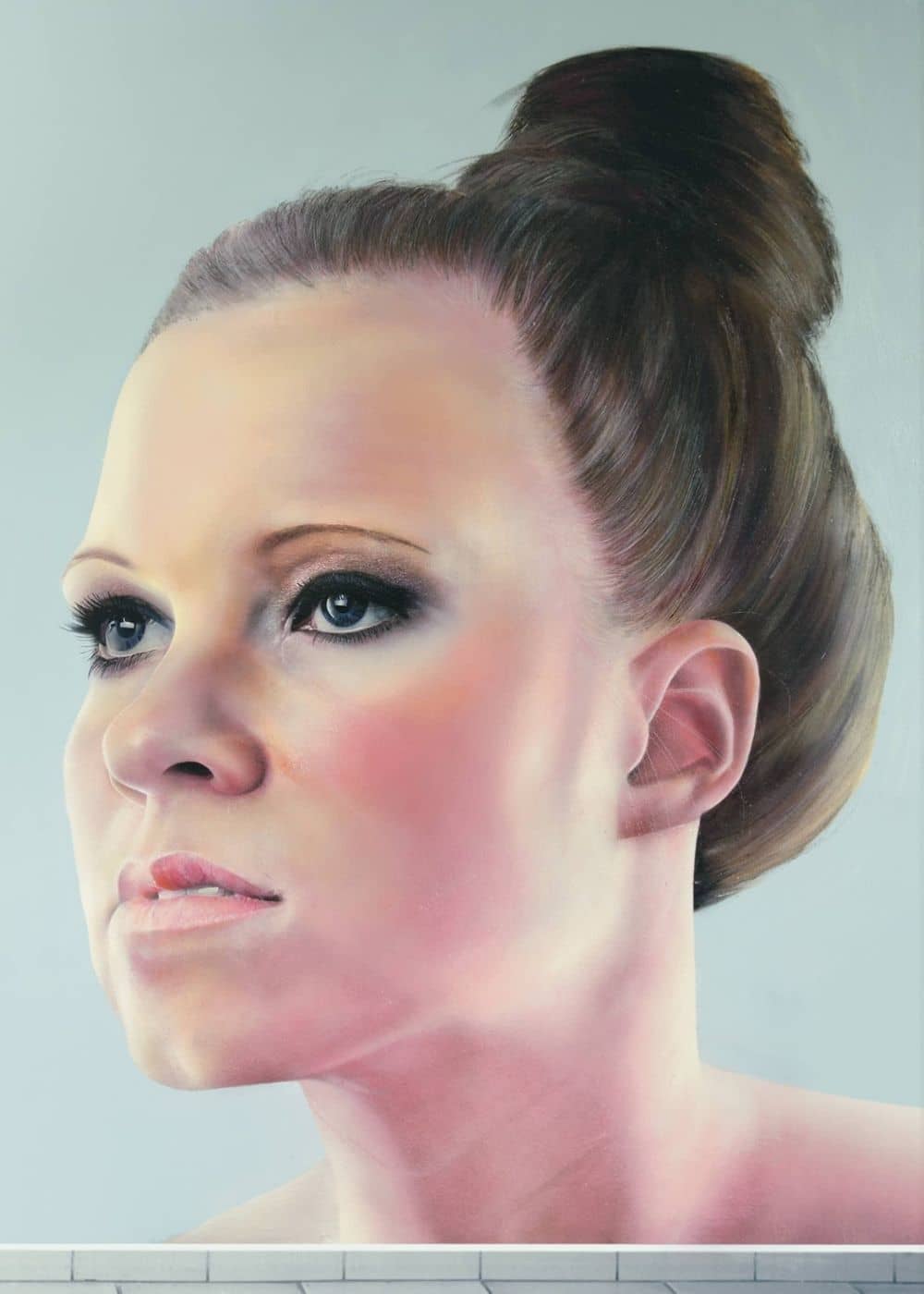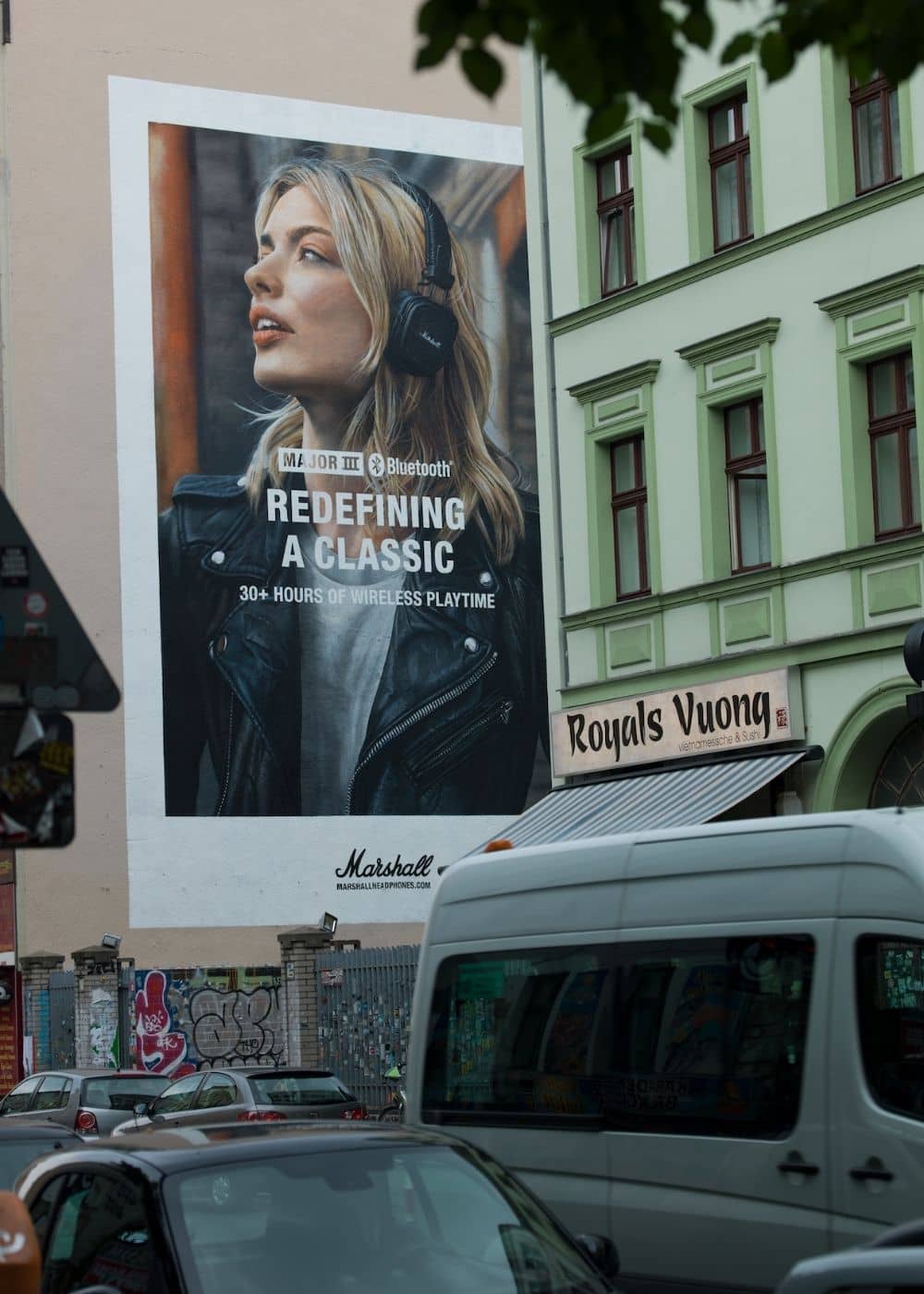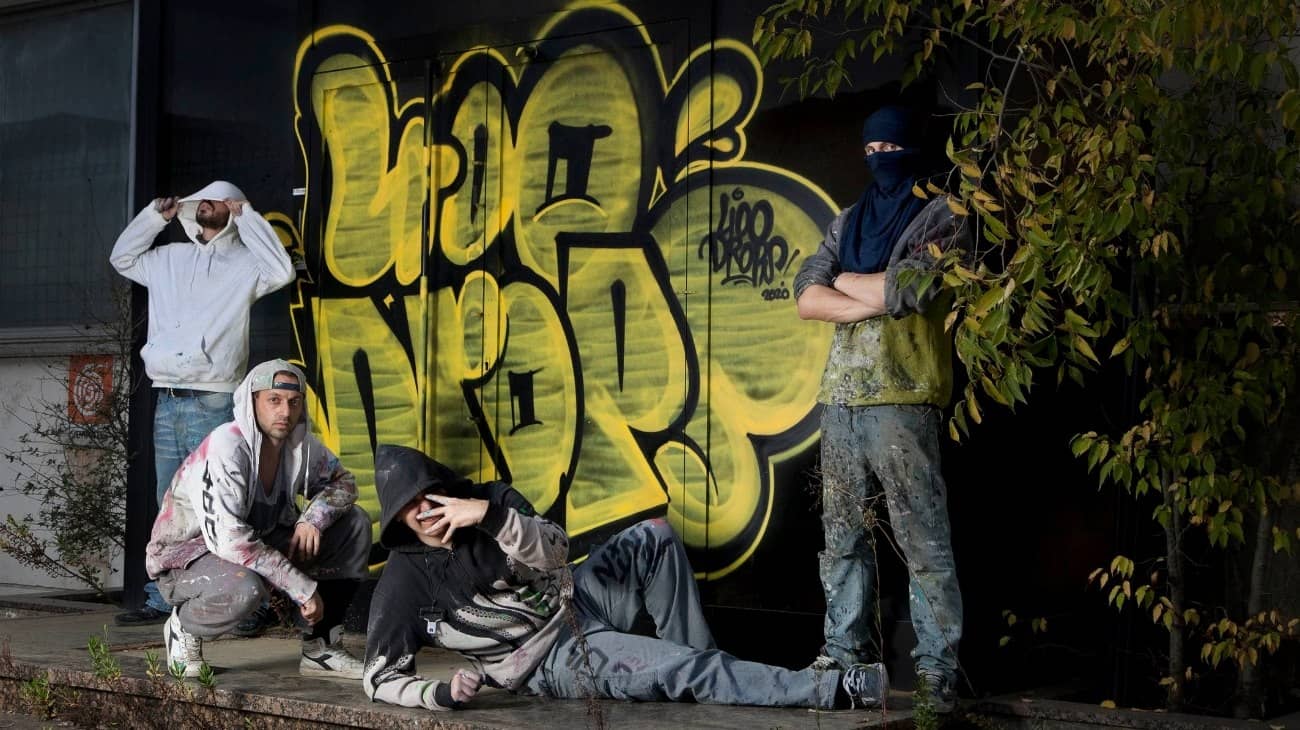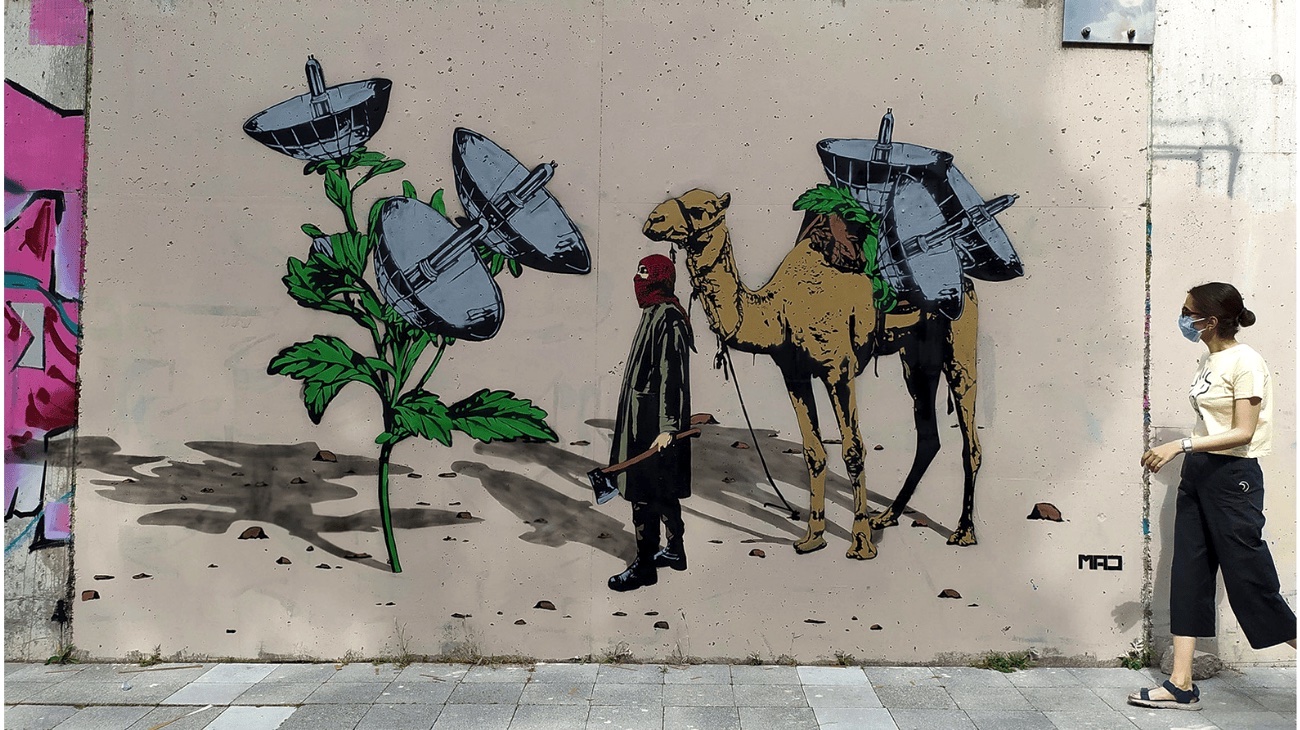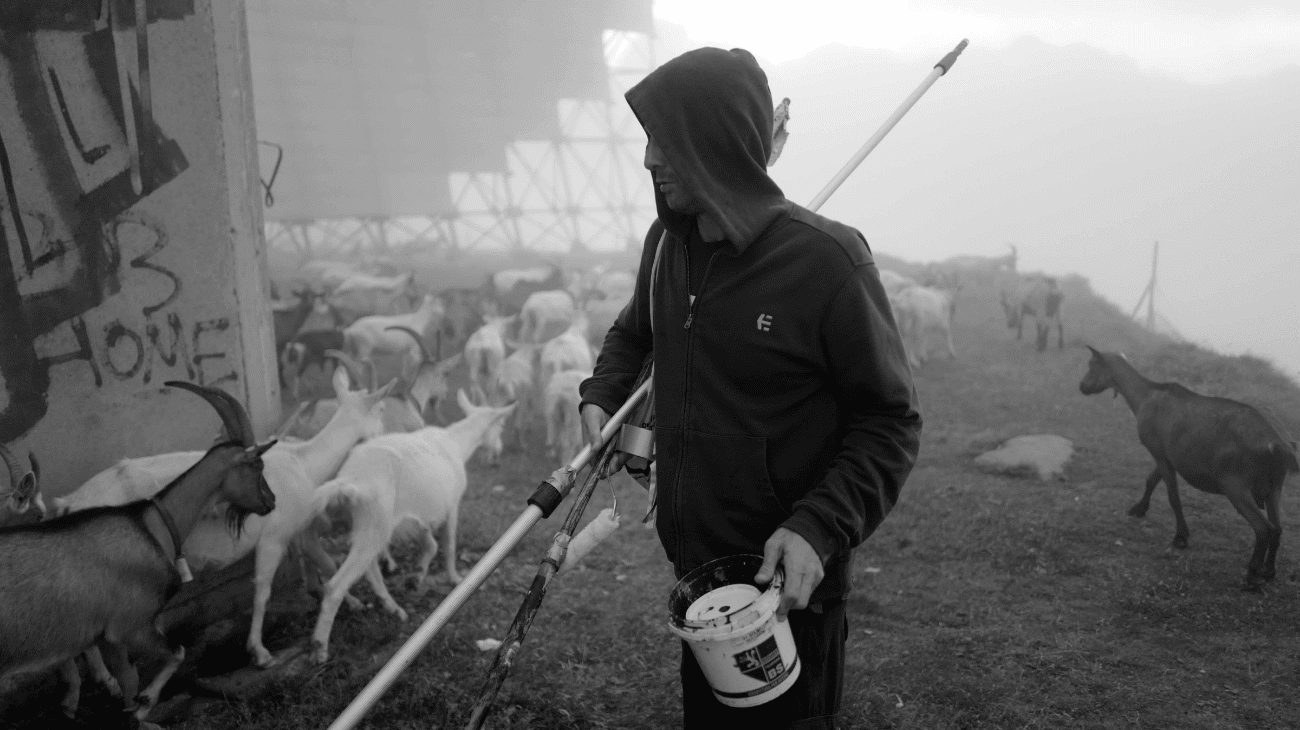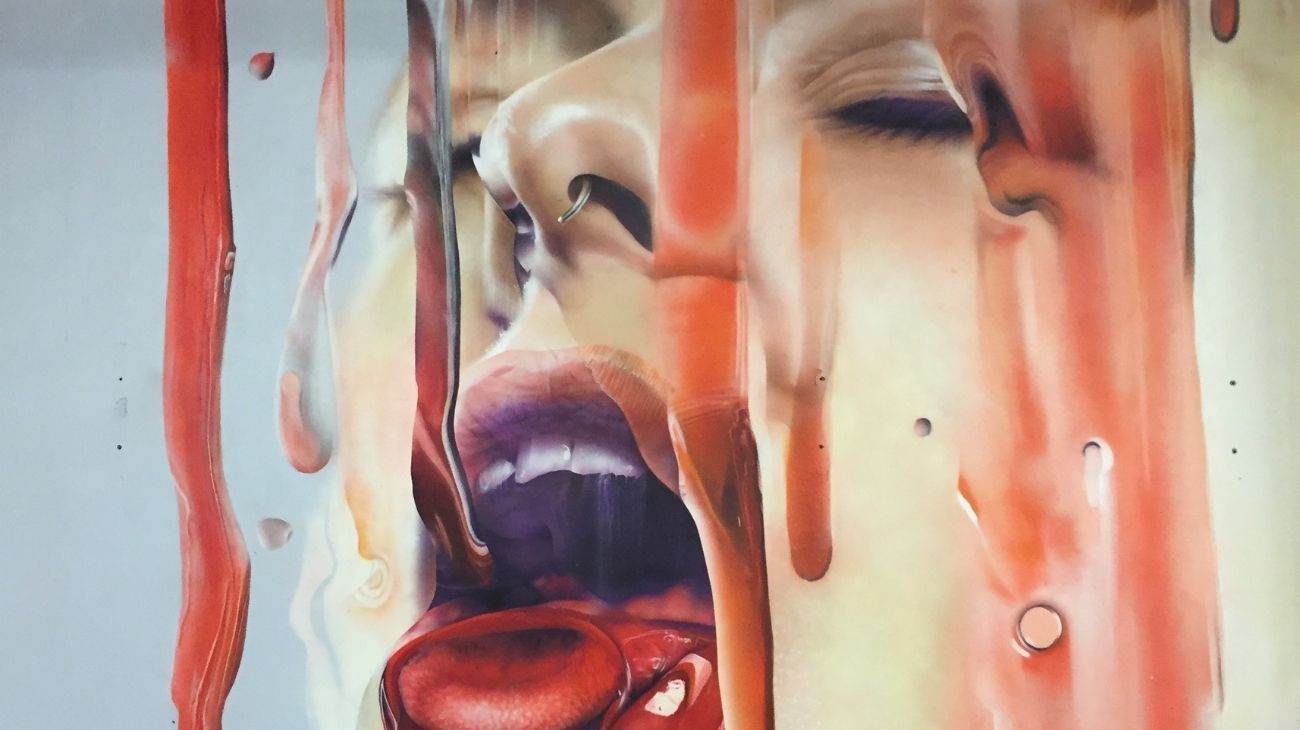
TANK
Interview with hyperrealistic muralist TANK:
Urban art is characterized more by its uncompromising approach to the viewer than any other art form.
Unlike many other artists of the street art scene, you don’t keep your identity secret, but you work under the pseudonym TANK or TXNK. What is behind the name?
The name itself was practically a coincidence. Around 1997, as a graffiti style painter, I had tried out a number of names, and sat in my room, with the alphabet in front of me, to create a new name that would be final. At some point in this process of finding a name, I looked over to the television, which was playing a film from video cassette. It was TANK GIRL, a film about a woman driving half-naked through the desert in her tank, shooting at all kinds of stuff. I liked that, and that’s how I got my name at that moment. I only use TXNK when, as in the case of Facebook, the word itself is censored.
Unlike many other painters I do not regret the name, even now. Many street art artists don’t give themselves pseudonyms any more, which is also a way to deal with the topic. There is no right or wrong in art and painting. Façade art, graffiti and street art merge into constellations of their own, which are again not clearly definable, which I also find beautiful. But for me, the artist pseudonym is part of my personality. My actual identity is not necessarily secret, but I can conceal it if I have to, without becoming nameless.
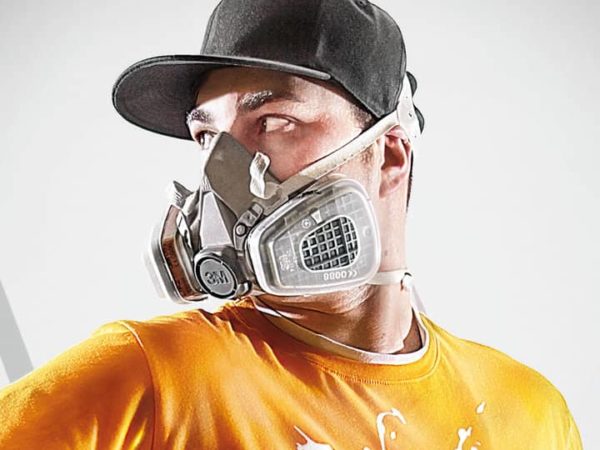
What is your personal definition of (urban) art? Is it a job, a passion or an intrinsic need for you?
Urban art means leaving your comfortable, air-conditioned, refrigerator- and toilet-equipped studio or apartment and instead getting your hands dirty in the urban jungle (or small-town jungle) to creatively present your inner self to an anonymous public in the form of a message, in a visual language or otherwise – both legal and illegal. Urban art is characterized more by its uncompromising approach to the viewer than any other art form.
For me, first and foremost it was a passion, but façade painting became a job very early on. This is certainly due to my penchant for realistic painting, which became apparent to me very quickly. However, to reach the point where I am today, it was, as you might imagine, not a very straightforward path. But in the end I always followed my intuition and turned to painting.
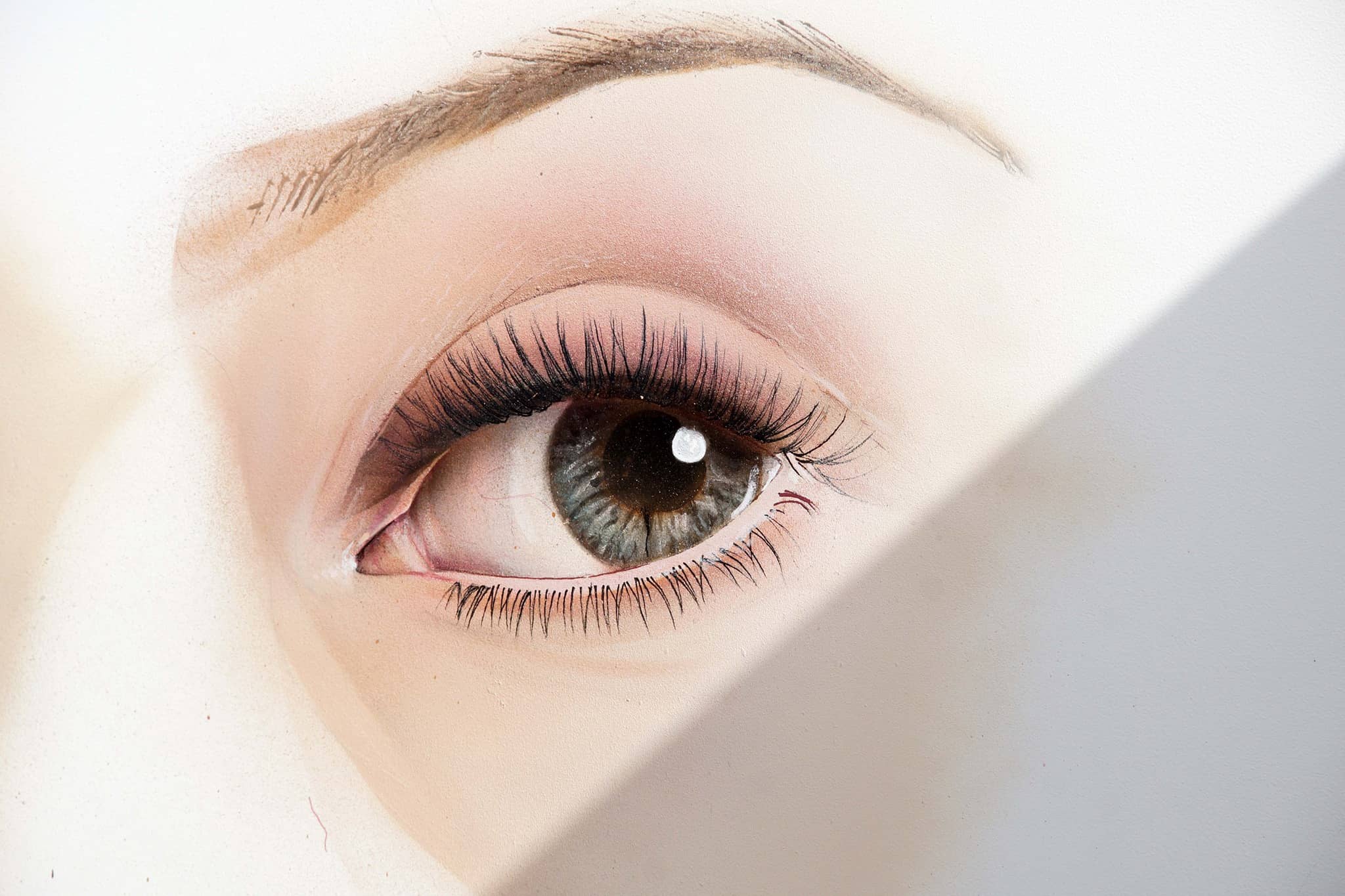
You started painting many years ago in the youth center of your hometown, Leichlingen, Germany. How did your artistic development proceed and how did you come to urban art and your first mural?
This is indeed well researched. My artistic career was very isolated. I often painted in silence and “trained”. I also looked for walls that were difficult to access in public. At one secondary school in my hometown, I regularly redesigned walls with my own motifs for a while. I have even added one or two new paintings there in recent years.
Due to various circumstances, such as working in advertising agencies or photo studios, I interrupted the façade painting partially for a longer time. However, these excursions did not harm my painting; on the contrary, they rather strengthened it conceptually in retrospect.
But I have to say that I am very open to all kinds of art forms, and I also like to let myself fall into something other than pure painting for a while. In addition, I like to build bigger and smaller prototypes from time to time, if I have some free time and a good idea. Photography, design, art – these are all areas that require a lot of training to grasp and master them in their full scope. So there is practically no time for parties or pets or anything like that. I have consciously chosen this focused path in order to be able to develop a certain skill level in façade painting.
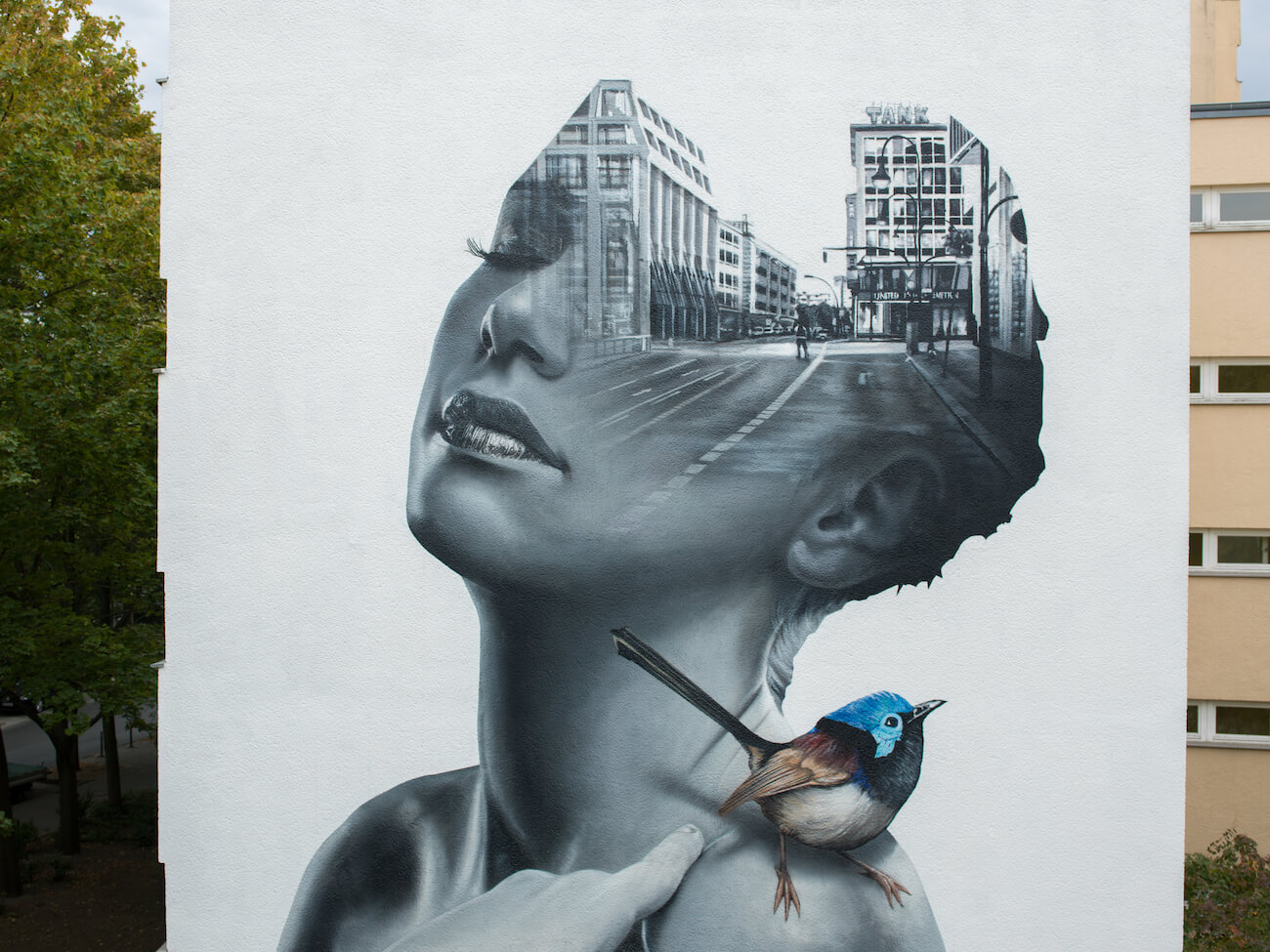
Your focus is on mural art and your specialty is façade-high, hyperrealistic murals. How can one imagine the organizational and creative process of such a work? Which techniques do you use, and how is it possible to perfectly transfer proportions in these dimensions on a wall, while standing directly in front of it?
When the design is finalized, the corresponding paint and spray colors are selected and listed. Scaffolding or a lifting platform will be booked, and of course a team will be set up.
All that is needed to get started is a very precise grid on the wall. This is the basis of my painting. The same grid I have scaled down on my design draft. In this way, you can measure every point on the wall to check if you have painted accurately enough. A certain amount of experience is helpful, and it is very valuable if you are in the position to have your own team, where everyone brings their own area of focus. It is important to me to have the right answer, in the form of an appropriate painting technique, for every design that is to be realized. My specialty is portrait painting, and anything that looks alive. Of course, I can fall back on a wealth of my own techniques, which I have developed over the years.
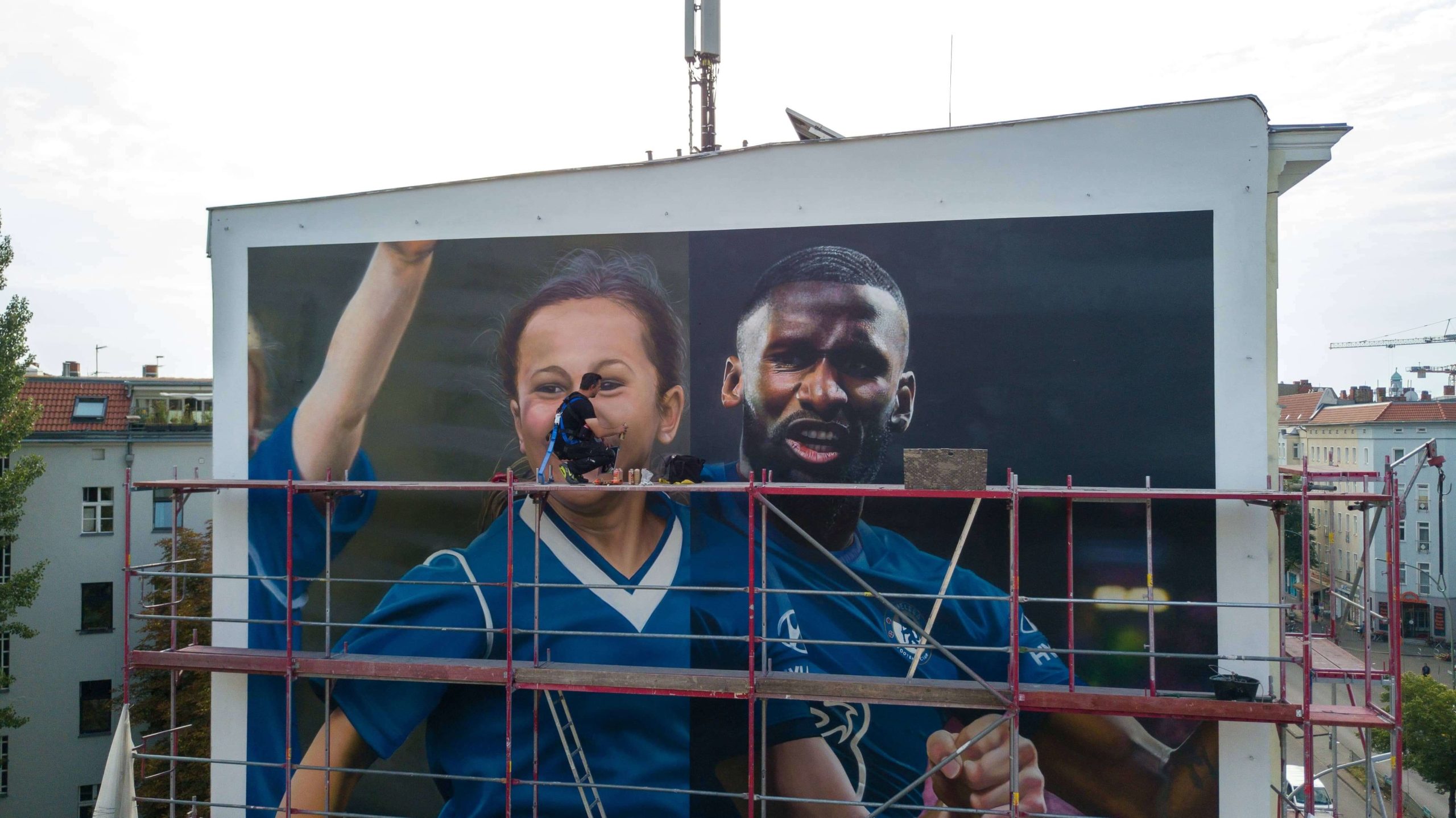
You also work as a mural artist for big brands like Netflix, Nike and Johnnie Walker. Some urban artists clearly distance themselves from commercial commissions, in the sense that urban art must remain urban and, above all, free. Has there ever been a conflict between street art and commercial commissions for you, or have you ever been criticized for it?
Not really. In fact, no one has ever approached me to say that he or she has anything against the way I make my living. I think this has something to do with the fact that I have never tried to sell graffiti or street art as an image but have always painted very realistically, without mixing typical graffiti elements into the picture. Of course there are pictures of spray cans and such like, but I very rarely paint graffiti lettering on them. This has something to do with the fact that the classic lettering always shows the name of the artist, which is frankly too monotonous for me. It feels to me like I’m painting the same picture over and over again in a similar way, and I’m basically the wrong type for that.
I always need something new that challenges me, otherwise I don’t find the work satisfying. But I am also in the lucky position that even my private paintings basically look like advertisements, only without a logo. Currently I have started to work with “disturbers” by letting the models in the studio lick various liquids from the panes while taking photos from the other side of the pane, which serve as a reference for my paintings. In this way I disturb the classic beauty look without losing “glamour”. Basically, the jump to commercial painting is easy if you paint very realistically anyway.
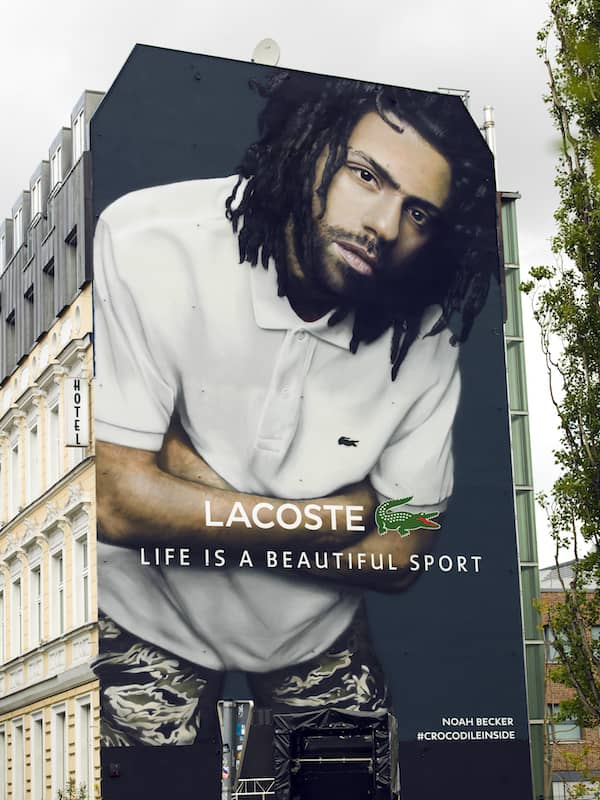
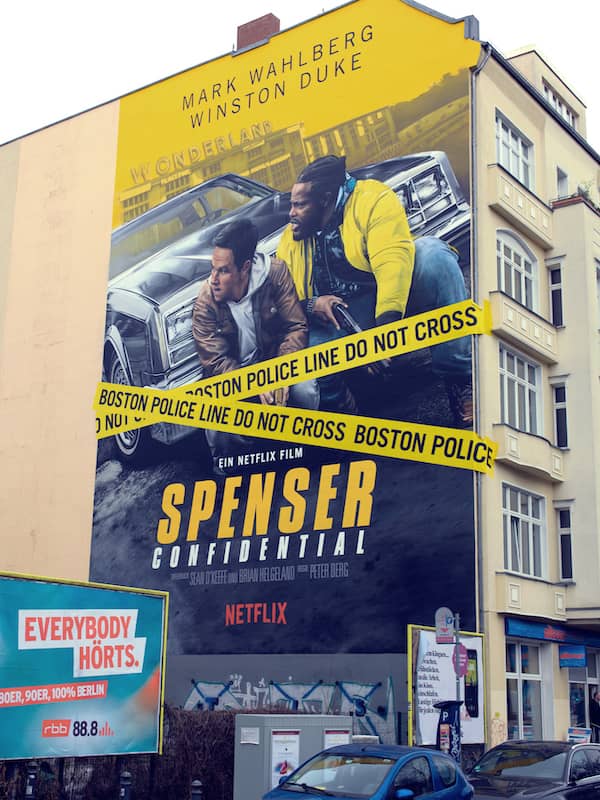
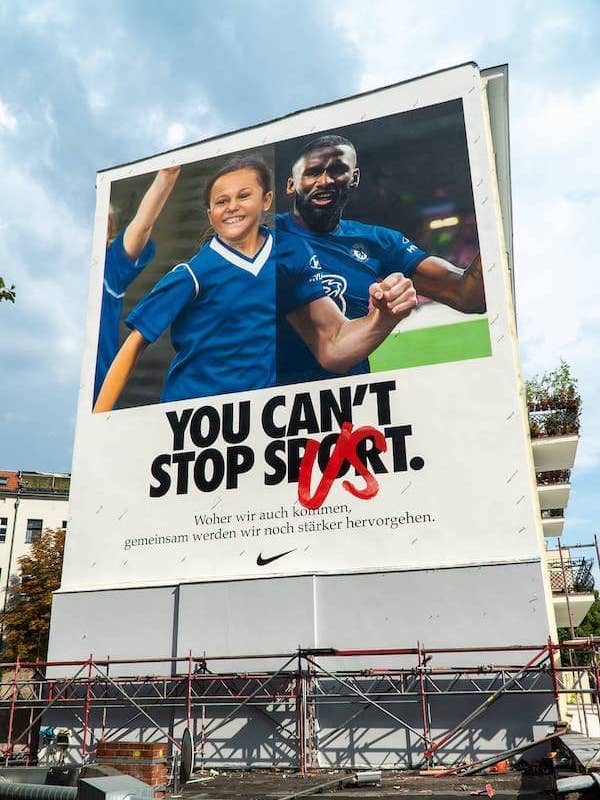
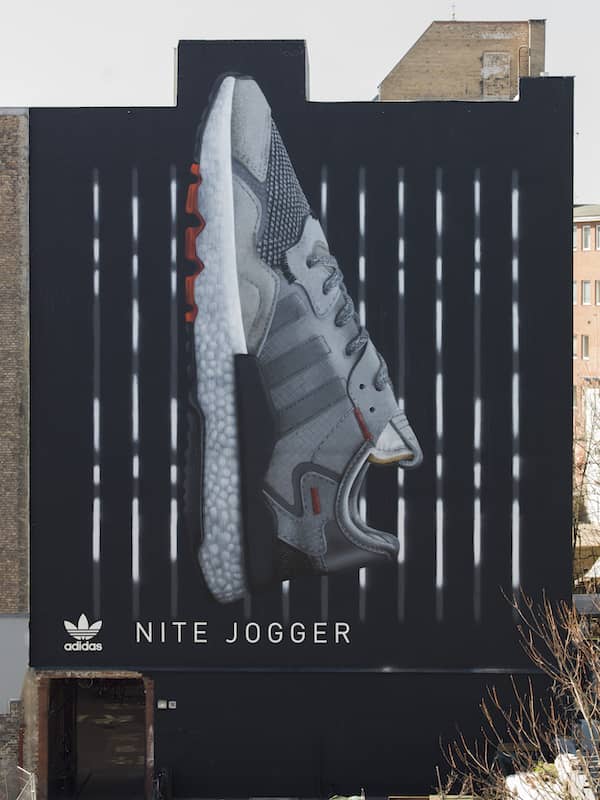
What criteria do you use to select your projects? How do you find legal walls?
Often the projects actually choose me. If a beauty portrait is needed, or a complicated product illustration, or a surface structure illustration for which there is no obvious solution, I come into play. I work almost exclusively with specialized agencies like Xi-Design in Berlin, and therefore I only work on realizations for top brands. However, I only publish about a third of the façades I paint, because some of them are simply not exciting enough to show, or I am bound by the obligation not to present them, although I would like to.
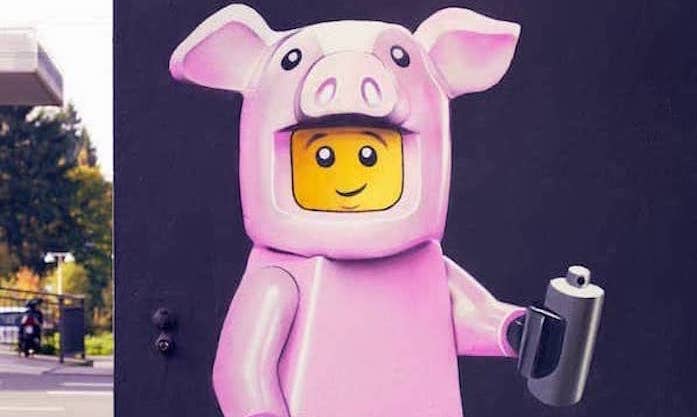
I ask for legal walls for my own projects, but I am often so involved that I am booked out months in advance. It’s not easy to plan something of your own, especially since such projects can be dynamic and you only have everything on the table at the last moment and then have to start right away. That’s why I would rather paint canvases or festivals if I have the time.
Besides your commissioned work, do you also ‘unofficially’ paint more or less legal walls?
I’m really very busy and prefer to spend my time in my studio, when I have the time, implementing ideas that have been left behind, working out designs on the computer or organizing photo shoots.
Apart from that, I also like to sleep at night 😉
You also have taught art in schools in the past. Are there a few tips and tricks you would like to share with dedicated young artists today?
I would certainly have laughed myself out of this 20 years ago, but the most important thing is exact preparation and an unemotional approach to the motif. Determining the approach, process and techniques sounds exhausting, but it is the quickest way to a satisfying result. Above all, one should not give up when things are not going well. If you work on your picture longer than others do, you will of course get a better result. Switch off habitual thinking structures and keep yourself mentally open to every painting technique.
For example, there are painters who only paint with Montana spray cans. But now I have painted all the skin colors of each manufacturer on cards myself, and I can put the colors together and compare them regardless of manufacturer. I have found that there are excellent color series that would have remained hidden if I had limited myself to only one manufacturer. So I paint MTN, Molotow, Montana GOLD, Montana Black, Loop, and various transparent colors into each other and get a very special result.
Feel free to touch your fresh picture and scratch a texture with your fingers or cardboard, especially in hair or small highlights. A brush together with acetone can also give a picture very fine features that make a difference. If you want to stand out, you should definitely not lock yourself into a way of thinking that keeps you from getting closer to your desired result, just to fulfill the expectations of a special scene, and make everything by hand, even though you could have projected the image. Of course, it is not only the result that counts but also that you have fun while painting. If you are not happy with the final result, you can consider using unusual or your own techniques to get both fun while painting and a top result.
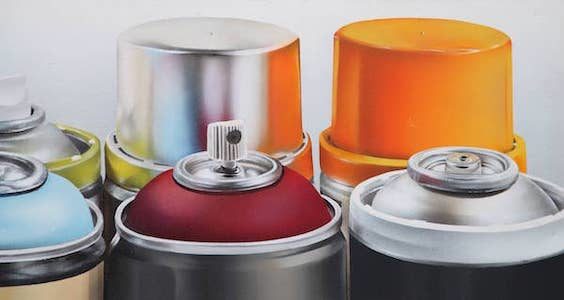
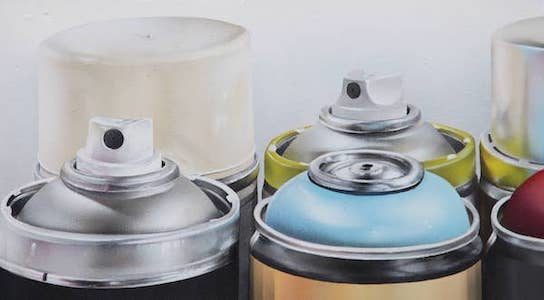
Is there a city or country where you prefer to work?
Actually, I like to be everywhere. Only countries that are especially hot cause me some trouble, but then I just fight my way through. Actually, the circumstances, the country or the weather are not decisive for me. I enjoy being around the often great artists at festivals, and unusual locations. I often just watch for a while and talk to the other artists. Their intention, why they paint something and why they do it in this way is surprising and interesting every time.

What were the most extraordinary experiences of your career so far, both positive and negative?
This raises the question of what is considered ordinary when you travel around with different artists from all kinds of regions and countries to paint facades. Usually it’s only when I talk to people in other professions that I realize how extraordinary my everyday life often is. Basically, the question of experiences cannot be clearly answered for me because it is often a vibe at a festival or a procedure at a job that was very extraordinary. It is an intangible spirit that envelops some projects.

Are there plans, projects or dreams for the future?
This year I’m planning some unusual projects, but I can’t say anything about them yet. Only that I will dig very deep into my bag of tricks.
_______________________________________
TANK / Eike Conzen
Berlin, Germany
Instagram Tank.Insta
Facebook Tank.Delta
© TANK
_______________________________________
January 2021


